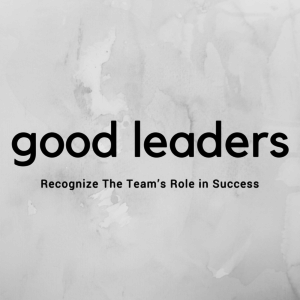Mary E. Marshall's Blog, page 22
January 30, 2018
Attention Seattle Entrepreneurs!
 2017 SBA Emerging Leaders Graduates
2017 SBA Emerging Leaders GraduatesFor the 6th consecutive year, the Seattle Office of the Small Business Administration will be sponsoring the Emerging Leaders course. This is a 7-month course that helps entrepreneurs create a strategic growth plan for their business that actually works. With over 100 graduates in the Seattle area and over 5,000 nationwide, this is the best program for small business owners around. To qualify, you must have at least $500K in revenue and have been in business for five years. All types of businesses are welcome to apply. Last year we had over 100 applicants and can only select 20 so competition to get in is fierce!
Of course, I’m biased towards this program as I’ve been lucky enough to be the instructor for the last 6 years. The progress these entrepreneurs make on their businesses, the growth they experience and the jobs they create are amazing. I just met with some of the graduates from last year and almost all have experienced growth as a result of the strategic changes they have made in their businesses. The best part is that other than your time investment, there is no cost. The SBA covers 100% of the tuition.
Entrepreneurs will learn about Leadership and Culture, Financials, Sales and Marketing and HR. They will also get an in-depth look at all the programs the SBA has to offer and learn how they might leverage those for their business growth. The best part is that they end up with a growth plan that works for them and provides strategic and tactical direction for them and their teams. They get a chance to work on their business vs. in their business.
If you’ve ever wondered why you can’t get past a certain stage of your business or are aware that you never had any formal training as an entrepreneur this is for you. We’ll fill in the missing gaps and arm you with all the tools and knowledge you’ll need to get to that next level of business growth. I know entrepreneurs are resistant to look at the map while on the road, but this is one time you’ll want to stop and take a look!
Applications are open until March 1st, 2018 and we will start sometime in the first part of April so don’t delay. I look forward to helping your business grow!
The post Attention Seattle Entrepreneurs! appeared first on Mary Marshall // CEO Coach.
January 24, 2018
Good Leaders Are Not Complicit
 Dictionary.com declared “complicit” to be the word of the year in 2017 and Carina Chocano of The New York Times did a great piece that outlines why it happened.
Dictionary.com declared “complicit” to be the word of the year in 2017 and Carina Chocano of The New York Times did a great piece that outlines why it happened.
Webster’s defines complicit as meaning “involved with others in an illegal activity or wrongdoing.” We all know when we have done it – been involved in something where we looked the other way or worse, aided in a wrongful act or deed.
Why this can be so damaging in the workplace is that it erodes trust, hope, stability, and compassion. All the things that employees value. You can’t have a successful, productive culture when people are complicit. Years ago, I had a President of an organization convene a meeting of the senior executives, (of which I was one), and outline for us how she was going to undermine a program that the CEO wanted to roll out. We were all asked to say nothing about this meeting to anyone. I was stunned and unsure of what to do. Saying something would likely get me fired, not saying something was against everything I believed in – so I hedged. I told her directly, in front of the group, that I was uncomfortable participating in this. I asked that we might hold a meeting with all the stakeholders to discuss it. I then said I would not take the conversation outside of that room if that was still her wish – and It was. I ended up being complicit because although I refused to participate in her plans, she continued moving them forward and I said nothing to the CEO. This was the beginning of the end for me at this firm. After I left the organization, I was glad to hear that she was fired for another instance of the same behavior. Unfortunately, irreparable damage had already been done to the organization.
We are taught to “do the right thing” from a very early age. The problem is that as you get older, you realize others have different definitions of “the right thing” and pretty soon, that line is so blurred it’s wiped away. This is why we are so fed up with politicians who blatantly say one thing and do another – talking to us with hands behind their backs accepting money for doing the opposite of what they say.
Good cultures reinforce their values at every level – in thoughts, words, and deeds. No exceptions. With the strong guard rails of well-defined values, culture helps everyone in the organization know what “the right thing” is. It’s not hard, in fact, it’s easier than being complicit in someone else’s bad behavior. The organization I mentioned earlier? One of its core values was trust. It was broken in one meeting and the value cemented as meaningless with the President’s refusal to change course. Good cultures are productive, engaging, happy places to work. The others are not and require people to be complicit in some very bad behavior to get paid.
It might be easier to look the other way or be complicit when bosses, co-workers or others behave badly, but all it takes is for one of us to say “no.” with your voice or your feet. Say something or leave but don’t be complicit.
The post Good Leaders Are Not Complicit appeared first on Mary Marshall // CEO Coach.
January 17, 2018
The Name Game
 When entrepreneurs start up a business one of the decisions to be made is the name. A large portion of our businesses are named after the owner (yours truly included). While this may be an easy way to get things started, it may not always be the best. , there is both good and bad about naming a company after yourself.
When entrepreneurs start up a business one of the decisions to be made is the name. A large portion of our businesses are named after the owner (yours truly included). While this may be an easy way to get things started, it may not always be the best. , there is both good and bad about naming a company after yourself.
On the plus side, you can build a powerful personal brand, there is a lot of recognition for you, the founder, and people like businesses that are associated with a person versus a static object or a made-up word. Assuming you have a good reputation, this can help get the word out about your new company and from then on YOU become the company and vice versa. In my consulting practice, it was easy, and it made sense as I could leverage the reputation I had built up over the years as an executive coach and strategic planner. This can also be powerful if you come from a well-known or famous family name, you can leverage the hard work of your parents or grandparents.
However, the list of negatives for naming a company after yourself is long. First, if you don’t want to be the face of the company forever you probably shouldn’t use your own name. Selling the business might be harder if you are the brand and are no longer with the business – it could lessen the value considerably. If you or one of your relatives does something infamous, your brand will be tarnished or potentially sink like a stone. It’s true that many companies referenced in the article have become the product after generations and no longer the name (Procter and Gamble) but those are few and far between.
The other consideration when coming up with a name is not just what your company is today but what might it be in the future. If you call yourself the Printer Supply Company and then down the road expand into a different type of product line or service, it will take some time and money to rebrand as the new entity.
Lastly, don’t pick something unpronounceable, hard to spell or just too odd. If it’s a made-up word, you will have to educate folks, so be sure you have a good brand strategist at the start. Just like naming your children something that will make them stand out in a way that is potentially a negative for the rest of their lives, (think Gwyneth Paltrow’s daughter ‘Apple’), give it some thought before slapping a “name” on your business baby.
The post appeared first on Mary Marshall // CEO Coach.
January 10, 2018
Good Leaders Know Their Strengths
 With national focus on emotional intelligence in leadership, (or the lack thereof), I thought it would be a good time to reinforce the premise of Gallup’s StrengthsFinder. So often, leaders are clueless as to their actual strengths, believing that because they have been successful, they must be great at everything. This is one of the biggest leadership fallacies and potentially the most damaging.
With national focus on emotional intelligence in leadership, (or the lack thereof), I thought it would be a good time to reinforce the premise of Gallup’s StrengthsFinder. So often, leaders are clueless as to their actual strengths, believing that because they have been successful, they must be great at everything. This is one of the biggest leadership fallacies and potentially the most damaging.
First, if a leader assumes they are good at everything, there will be areas of the organization that are ill-served and poorly run because of this lack of self-awareness. Second, everyone often assumes that what the leader believes is true, creating more confusion and mistaken assumptions. Ultimately, we have a situation like our national stage where everyone is talking behind the leader’s back and admitting the reality, but never to his face. This is unproductive at the very least and dangerous at its worst.
Good leaders, on the other hand, know what they are good at and what they are not. They rise to power by surrounding themselves with those who are good at the things they are not naturally talented at and focus on what only they can do. Good leaders admit when they have weaknesses and show the team that it’s okay, it will be covered by those who have that particular strength. I have not worked with a successful leader yet who has not recognized what they cannot do well – and more importantly – they know exactly what they can.
StrengthsFinder says that we are all born with talents. With hard work and practice, training and coaching, these talents become real strengths. We can only lead from an area of strength, not from an area of weakness. When leaders try to lead from weakness, it’s like a see-through shower curtain and it’s not pretty. Everyone averts their eyes but knows what it looks like. Employees and teams in any organization WANT to believe their leader knows what he or she is doing – so leaders are given the benefit of the doubt right out of the gate. However, the shower curtain becomes more and more clear after only a short period of time watching the leader bumble through strategies, tasks, and talks. Then confidence is gone for all but the most fervent followers who continue to look through a very fogged up curtain.
As the leader, it’s up to you to become more self-aware. Really be honest with yourself about what you do well and what you don’t. By surrounding yourself with others who fill in the gaps, you create a winning team and strategy. But mostly, you teach others how to self-assess. You teach them that not every leader is created equal, that everyone has unique and different talents. Having a weakness is not fatal. Knowing your leadership strengths and leading through them is a gift to your team every day about how they can be more successful.
The post Good Leaders Know Their Strengths appeared first on Mary Marshall // CEO Coach.
January 4, 2018
Good Leaders Build Great Teams
 As we start off the New Year, it’s important for entrepreneurs to remember that it’s not all about them, it’s about the team. There is only so much one can accomplish alone. However, with a team, the possibilities are limitless. A great New York Times piece, How to Build a Successful Team, highlighted key elements of a great team. In a nutshell, the 5 main components are:
As we start off the New Year, it’s important for entrepreneurs to remember that it’s not all about them, it’s about the team. There is only so much one can accomplish alone. However, with a team, the possibilities are limitless. A great New York Times piece, How to Build a Successful Team, highlighted key elements of a great team. In a nutshell, the 5 main components are:
Make a Plan
Rules of the Road
Show a Little Respect
It’s About the Team
Have Conversations
Having the vision or making the plan, is the leader’s job. “How” is up to the team. Teams cannot coalesce around a weak or poorly understood plan. The leader must make it very clear and explicit what the expectations are, what outcome or results are expected, and how it will be measured.
The rules of the road are about culture and how the leader’s job is to set the culture. Bottom line, this should be done prior to hiring anyone on the team because a team’s culture is already baked. The leader’s job is to diligently define and manage this as a guidepost for the rest of the organization. Hiring a cultural misfit will shift culture into a different direction and almost always not the intended one. The result is productivity will slide and likely so will morale.
Show a little respect is very important. Treating people as we would want to be treated (Golden Rule) is the only way to motivate people. Disrespecting, yelling, abusing and negative behaviors on the leader’s part will only degrade the performance of the team. No one performs well for an obnoxious boss so don’t be that guy.
So often we forget that it’s not about us as leaders, it’s about the team. They are the ones accomplishing the goals. We need to respect them as human beings if we expect any sort of quality product to be produced. Acknowledge when they are on track and when they are off. Celebrate the team, not the leader.
Lastly, don’t practice “seagull management,” meaning flying in and dropping a load all over your team and their plans. Have regular conversations about what they are trying to accomplish, what resources they need, how are they progressing, and how are they doing against the goals and the scorecards. Set them up for success with regular conversations that move projects forward, not backward.
Assuming you have the right team, this practice will work well for you. However, if you have one or two cultural misfits on your team, now would be a good time to decide how to get them up or out. If they are not with you and the rest of the team, they are against you. This sets everyone up for an uphill battle and in the end, there will only be losers not winners in this scenario.
The post Good Leaders Build Great Teams appeared first on Mary Marshall // CEO Coach.
December 27, 2017
Is Your Organization Designed for Success?
 When I work with an organization, I look at a lot of things. Over the years, however, I’ve come to believe the fundamental “design” of the organization is the key to its success or failure. This is actually a little different than Organizational Development or “OD” as it’s known. OD is a deliberately planned, organization-wide effort to increase an organization’s effectiveness or efficiency.
When I work with an organization, I look at a lot of things. Over the years, however, I’ve come to believe the fundamental “design” of the organization is the key to its success or failure. This is actually a little different than Organizational Development or “OD” as it’s known. OD is a deliberately planned, organization-wide effort to increase an organization’s effectiveness or efficiency.
Design is how the organization is set up. Yes, it involves the organizational chart or “org chart,” but it’s how it’s put together that allows a company to thrive or wither. Think of it like StrengthsFinders 2.0, the work by the Gallup organization that posits that everyone has strengths that can be grown into talents. Strengths are the natural areas of ability that people thrive in if practiced or nurtured.
The strengths required for each position in an organization need to be matched to the right individual and the structure around that person needs to be matched to his or her development needs. It goes something like this:
At the foundation, start with the values of the organization.
Then start looking at what the organization requires for its product or service to be sold and delivered profitably.
Next, you create positions with strengths identified that if developed into talents, would make the individual and the company successful.
This is done for each department. It is tested continuously until you have the right “mix” for the batter.
Next create the management structure that supports, nurtures and trains these “strengths” to tease out the talent. You also need to do the same for the management.
In its simplest form, it’s about having the right people on the bus, in the right seats, (as author of “Good to Great” Jim Collins would say).
It’s rare that you see an organization with the organizational design right and firing on all cylinders and it takes a while to get there, through lots of trial and error. But when you do, it all comes together like beautiful music being played by a world-class symphony orchestra. I’ve worked with a couple of companies in this position and it’s really thrilling to see the collaboration, lack of ego and the enormous amount of work being accomplished. What one client company had not been able to do in 20+ years, they have achieved in the last three. It’s like a new company. They have the battle scars to prove it, but the future is theirs for the taking – and they are having so much fun!
It’s what entrepreneurial companies are all about – trying new things, teaching, learning, collaborating, competing and at the end of the day, winning. All big companies were small once, and if you get the Organizational Design right, you’ll create a big company and launch people in the process. The design and people are the heart of the matter, the product always comes second. If you get the design right and the right people in the right positions your business will thrive!
The post Is Your Organization Designed for Success? appeared first on Mary Marshall // CEO Coach.
December 20, 2017
Good Leaders Recognize The Team’s Role in Success
 The case of Chobani is a classic entrepreneurial story and also the story of how good leaders work. Hamdi Ulukaya, founder, and CEO is a Turkish immigrant who saw how to make something that no one else was doing well – Greek yogurt – and take it to another level. Just over a year ago he announced that he was giving 10% of the company, valued at $3 billion at the time, to his employees.
The case of Chobani is a classic entrepreneurial story and also the story of how good leaders work. Hamdi Ulukaya, founder, and CEO is a Turkish immigrant who saw how to make something that no one else was doing well – Greek yogurt – and take it to another level. Just over a year ago he announced that he was giving 10% of the company, valued at $3 billion at the time, to his employees.
He was clear that it was not a gift but, “a mutual promise to work together with a shared purpose and responsibility,” as he stated in a memo to employees. “How we built this company matters to me, but how we grow it matters even more. I want you to be a part of this growth. I want you to be the driving force of it.”
This is why I love entrepreneurs – employees matter. Small to mid-sized entrepreneurial companies employ 73% of the workforce and really do care about them. They understand that if their employees do well, so does the company. Arguably, Chobani is no longer a small or mid-sized entrepreneurial company, but it used to be. And the founder didn’t forget all those people who helped build the company and those who stuck with him when he expanded too rapidly and production and process got out of control. They helped to get it back on track and his goal all along was to share. It’s not an insignificant amount of money either. It will range from $150,000 to $1,000,000 depending upon length of employment. The culture, based on strong values of – INTEGRITY. CRAFTSMANSHIP. INNOVATION. LEADERSHIP. PEOPLE. GIVING BACK – has produced amazing success for all.
As I’ve said before, employees come to work every day and want to do a good job. What happens when they get there is up to us, the entrepreneurs who have the privilege to lead the teams. It’s our job to make sure they have everything they need to be successful, including being in the right positions. Often times we don’t listen to their good ideas or ignore their suggestions for improvement because we “know best.” We don’t. The whole team, (including us), does. And for a job well done, this humble entrepreneur gave back and shared in order to recognize the results the whole team had created together.
How are you recognizing your employees’ role in your success? What have you put in place to let them know that you see and understand their contributions? Maybe you haven’t really thought about this? We are talking about something deeper and more meaningful than an employee of the month parking spot or some kind of paper certificate or gold star award. If your company is on a successful trajectory it’s time to really think through how you want to acknowledge the role your team has played in a meaningful way.
The post Good Leaders Recognize The Team’s Role in Success appeared first on Mary Marshall // CEO Coach.
December 13, 2017
The Golden Rule
 It’s hard to see any news today without noticing that accountability for past bad behavior is happening at record speed. Although it might seem like it’s about politics, at the core, it’s really about abuse of power. One person or institution has it, another does not. Minorities and women are often at the “does not” end of the equation and so the stories and events over the years have piled up to a tipping point and collectively we are finally saying “no more.” It’s not about evening the score or making false comparisons or justifications, it’s about acknowledging abuse that has been allowed for decades.
It’s hard to see any news today without noticing that accountability for past bad behavior is happening at record speed. Although it might seem like it’s about politics, at the core, it’s really about abuse of power. One person or institution has it, another does not. Minorities and women are often at the “does not” end of the equation and so the stories and events over the years have piled up to a tipping point and collectively we are finally saying “no more.” It’s not about evening the score or making false comparisons or justifications, it’s about acknowledging abuse that has been allowed for decades.
It’s incumbent on leaders in the workplace to create and provide a “safe” place to work for all of those for whom you provide employment. If we start with the Golden Rule – “do unto others what you wish to be done to you,” it’s pretty simple. To follow the Golden Rule all you have to do is ask yourself, “would I want someone to treat me this way?” If the answer is no, then you must not tolerate it from anyone, period.
As the leader, you set the tone, and you set the values that will be lived in the workplace. Any variation from the stated values creates a new “lived” set of values that can often be at cross purposes from your stated values. The minute this happens, unintentional culture is created. The leaders are the only ones who can stop it by calling out bad behavior that is contrary to the values of the organization – publically and forcefully. No exceptions, no waivers, full stop.
I believe it’s rare that a leader starts out wanting to abuse his or her power. I think it’s like the frog in the slowly warming pot of water. It will eventually die because it becomes acclimated to the ever-increasing heat until it’s too late. If you asked a leader if they would condone using their power to elicit sexual favors from a subordinate, they would, of course, say no. But when it’s happening all around, when one little indiscretion leads to another, before long the pot is boiling and the opportunity to jump out has long passed.
Look at your organization, look at your policies and procedures, look at your values and most importantly, view them all through the lens of the Golden Rule. Do the employees feel safe? Do they feel they are being treated fairly? Do you live the values of the company every day? If the answer is yes, you have nothing to worry about. If the answer is maybe, sometimes, or no, then you might have a problem. Time to do a reset and do the right thing for your company, for you and for your people.
As the old saying goes, “we are what we tolerate.” Make sure you know what that is.
The post The Golden Rule appeared first on Mary Marshall // CEO Coach.
December 7, 2017
Leadership and Giving Back
 This time of year, businesses are trying to figure out how best to give back to their employees and to their communities. However, from a good leadership perspective, I believe it should not be an event that happens once a year, it should be part of your culture and you should have a stated policy about it. The big companies call it “Corporate Social Responsibility” and it’s something to really consider. Arguably some companies do it solely as a PR play and it’s not really authentic. Samsung’s CEO has modeled how to do it right as reported here in Inc. magazine. In the article, author Steve Goldstein points out, there are 5 fundamentals to doing it well:
This time of year, businesses are trying to figure out how best to give back to their employees and to their communities. However, from a good leadership perspective, I believe it should not be an event that happens once a year, it should be part of your culture and you should have a stated policy about it. The big companies call it “Corporate Social Responsibility” and it’s something to really consider. Arguably some companies do it solely as a PR play and it’s not really authentic. Samsung’s CEO has modeled how to do it right as reported here in Inc. magazine. In the article, author Steve Goldstein points out, there are 5 fundamentals to doing it well:
Lead by example
Promote cross-departmental teams in the effort
Don’t be overly concerned with Public Relations
Return to work with a smile
Consider your product as a tool for giving back
The first is self-explanatory. If you as the leader don’t participate, why should anyone else want to? Make it authentic, find something you really care about and share why you believe in the charity and how people can join you in the effort – or as they say, “you go first.” Another option is to create a program where people select their own program and get a “giving day” off from work, or you can poll the employees as to what charity matters most to them and whichever one wins can be selected for support. You could even do this annually so that people don’t feel forced to be committed to 1 particular organization or cause on an ongoing basis that may or may not be meaningful to them personally.
Teams love to compete and the more excitement and enthusiasm you can generate amongst the employees, the better for the charity. Some will not participate and that’s ok. However, today’s workforce is very philanthropic and wants to work for an organization that also does good for the community. It is one of those difficult to measure “perks” that is important. Matching donations to a charity are important but “doing” whatever it is for the charity is much more visceral and visible.
If your only priority is to get good press for the effort it won’t be hard for people to opt out of the effort. Spotting inauthenticity is not hard and most turn off or tune out as a result. Don’t sabotage your effort by worrying about how it will play locally or nationally. Do good for good’s sake, not for the PR value.
Doing good makes people feel happy and happy people smile more with the knowledge that they have done good. This feeds on itself and that happiness translates into good things for the workplace. It’s not why you should be generous, it’s simply a very nice side benefit.
Lastly, most products can directly benefit local communities so why not give what you already have or know? So often we ignore our own expertise and think money is the only solution for giving. It’s not. Products and services that we provide can often make the difference between success and failure of non-profits. Employees love being useful and if their skills are used by the charity, it becomes more valuable to them than money and the charity is likely to feel the same way.
Think about your local communities. How can you give back? Some great examples for team giving are locating your local Ronald McDonald House and preparing a meal for the families or working on a house for Habitat for Humanity. Now is the time to start a program and make it a policy and part of your culture on an ongoing basis.
The post Leadership and Giving Back appeared first on Mary Marshall // CEO Coach.
November 29, 2017
Lead with Character
 Leadership is the hot topic these days – who should be the leader? How should they lead? What is leadership behavior? All good questions and depending on your perspective, there are multiple good answers. When someone asks me about “leadership” or what type of “leader” they should be or what does a successful leader look like, I usually start by asking “who” they are, meaning, who are they personally? Professionally? What do they believe and stand for? All of these make up their character and if you don’t lead with congruency to your own character, it’s game over.
Leadership is the hot topic these days – who should be the leader? How should they lead? What is leadership behavior? All good questions and depending on your perspective, there are multiple good answers. When someone asks me about “leadership” or what type of “leader” they should be or what does a successful leader look like, I usually start by asking “who” they are, meaning, who are they personally? Professionally? What do they believe and stand for? All of these make up their character and if you don’t lead with congruency to your own character, it’s game over.
So many leaders try to fit into a mold they believe is what a good leader looks like – which may or may not fit with who they are. If you try to lead in a way that is not consistent with your values, you won’t be leading for very long. Like a dog who can sense fear in a human, those who follow can instantly sense inauthenticity in a leader. A disconnect between what they say and what they do. There is not a costume you can don to put on your “leadership” and instantly transform like Clark Kent into a super leader. The only “costume” is the one you wear all the time.
Character is defined by Webster’s as “the mental and moral qualities distinctive to an individual.” People look to leaders to have qualities like integrity and authenticity and these are all part of what makes up character. Leaders who lead with their own character and values are so far ahead of the rest of the pack that it looks like they got a mile head start. Don’t worry about what people think of you or how you are going to look. If your character and values are your guide, you will always do right by you and usually by others as well.
People make the choice to follow a leader – or not – if they believe the leader has the ability to help the organization and its people get somewhere they could not or would not get on their own. The leaders that have what they believe to be character will be the ones they follow even though they may not truly believe or understand the mission or the “how” of the situation just yet. The decision relies on the willingness to “trust.” At the heart of every leader we follow is that for now we “trust” them more than we trust ourselves to go it alone. When trust breaks down, the followers go away. Even worse, they can rebel, and chaos can ensue.
Leaders start by trusting themselves, being true to their character and values and doing the right thing (to the best of their ability or knowledge). Whether leading an organization, a group, your family or yourself, the easiest path is to start by leading with your own true self – your character.
The post Lead with Character appeared first on Mary Marshall // CEO Coach.



